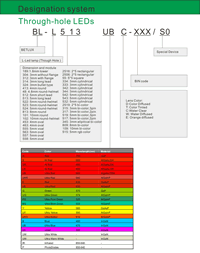Through hole LED
Series No:
Weight:(g/pcs)
Dimension:(mm)
Package:
Specification:
Inquiry
Description:
Introduction: The Dual Appeal of 2.05.07.0mm Bi-Color LEDs
Bi-color LEDs, especially in the rectangular form of 2.05.07.0mm, offer an unparalleled advantage in design flexibility and visual impact. These “bi color leds” provide electronics designers with the ability to incorporate multi-color indicators and backlighting into their projects without the need for multiple LEDs, simplifying design and enhancing functionality.
Features That Shine
- Dual-Color Output: Capable of emitting two distinct colors from a single diode, bi-color LEDs enable dynamic color switching and blending for various applications.
- Compact Design: The precise dimensions allow for integration into tight spaces, making them ideal for detailed electronic designs.
- Energy Efficiency: These LEDs maintain low power consumption while offering bright illumination, contributing to more sustainable electronic solutions.
- Longevity: Built for durability, bi-color LEDs ensure a prolonged lifespan, reducing the need for frequent replacements and maintenance.
Expanding Applications: Beyond Illumination
From consumer electronics to automotive displays, the applications of 2.05.07.0mm bi-color LEDs are extensive and diverse. Their ability to provide visual cues, enhance user interfaces, and contribute to safety and aesthetics makes them invaluable in modern electronic designs.
Benefits: Brightening Designs and Efficiency
Choosing bi-color LEDs brings numerous advantages, including reduced component count, improved energy efficiency, and enhanced aesthetic appeal. Their dual-color functionality not only enriches design possibilities but also streamlines the manufacturing process, offering a cost-effective solution for complex lighting requirements.
Case Studies: Dual-Color Innovation in Action
Real-world examples of 2.05.07.0mm bi-color LEDs highlight their application in groundbreaking projects. From enhancing the user experience in handheld devices to providing critical illumination in medical equipment, these case studies demonstrate the practical and innovative use of bi-color LEDs across industries.
Voices of Innovation: User Testimonials
Testimonials from professionals who have incorporated bi-color LEDs into their designs provide insights into their benefits. Feedback often highlights the enhanced functionality, visual appeal, and design flexibility enabled by these LEDs, reinforcing their value in electronic component development.
Conclusion: Embracing the Colorful Potential of Bi-Color LEDs
The exploration of 2.05.07.0mm bi-color LED diodes reveals their crucial role in the advancement of electronic design and lighting technology. As the industry continues to demand more efficient, compact, and versatile lighting solutions, the significance of bi-color LEDs in fostering innovation becomes increasingly evident.
Call to Action
For those at the cutting edge of electronics manufacturing and design, integrating 2.05.07.0mm bi-color LEDs into your projects represents a strategic move toward dynamic, efficient, and innovative lighting solutions. Discover the vast potential of these compact yet powerful diodes and let them illuminate your designs with a spectrum of vibrant possibilities.

Features
- Bi-Color LED Diodes (2.0 x 5.0 x 7.0mm): These LEDs contain two different color diodes within a single package, allowing for dual-color output.
- Rectangular Type LED Lamps (2.0 x 5.0mm): The rectangular shape provides a distinct linear light distribution, suitable for applications requiring a specific form factor.
- Choice of Various Viewing Angles: Available in different viewing angles to cater to specific lighting needs, ensuring optimal visibility and light distribution.
- Lens Options: Offered with diffused, transparent, and water-clear lenses. Diffused lenses provide a softer light spread, transparent lenses give a more defined light output, and water-clear lenses allow for the most direct and intense light.
- IC Compatibility / Low Current Capability: Can be easily integrated with integrated circuits, suitable for complex electronic designs. Their low current operation also enhances energy efficiency.
- RoHS Compliance: Adhere to environmental and safety standards, ensuring the use of materials that are safe and environmentally friendly.
Applications
- Indicator Lights: Widely used in control panels, electronic devices, and appliances as dual-color indicators for various statuses or warnings.
- Backlighting: Suitable for backlighting in displays and control panels where a rectangular light form is desired.
- Consumer Electronics: Employed in consumer electronics for dual-color status indicators, enhancing functionality and aesthetic appeal.
- Automotive Lighting: Utilized in vehicle dashboards and signal lighting, benefiting from the dual-color and rectangular light output.
- Signal and Signage Applications: Incorporated in signage, digital billboards, and traffic signals where dual-color illumination is beneficial.
- Toys and Novelty Items: Integrated into toys and novelty items for engaging and colorful lighting effects.
- Decorative Lighting: Used in decorative lighting solutions for homes and commercial spaces, offering unique design possibilities with bi-color and rectangular LEDs.
- DIY Projects and Hobby Electronics: Popular in DIY electronics and hobbyist projects for their versatility, unique shape, and bi-color functionality.


Electrical-optical characteristics:
Article No | color | material | wavelength | apperance | v_typ | v_max | luminous_min | luminous_typ | degree |
|---|---|---|---|---|---|---|---|---|---|
BL-L2519EGW |
Orange |
GaAsP/GaP |
635 |
Water Diff. |
2.5 |
7 |
20 |
110 |
|
BL-L2519EGW |
Green |
GaP/GaP |
570 |
Water Diff. |
2.5 |
4 |
15 |
110 |
|
BL-L2519UEUGW |
Ultra Green |
AlGaInP |
574 |
Water Diff. |
2.5 |
60 |
110 |
110 |
|
BL-L2519UEUGW |
Ultra orange |
AlGaInP |
630 |
Water Diff. |
2.5 |
80 |
160 |
110 |
|
BL-L2519YGW |
Yellow |
GaAsP/GaP |
585 |
Water Diff. |
2.5 |
4 |
15 |
110 |
|
BL-L2519YGW |
Green |
GaP/GaP |
570 |
Water Diff. |
2.5 |
4 |
15 |
110 |
Package configuration & Internal circuit diagram
Partno description:
More Information
Lens Color:
| Code | D | T | C | W | E | |
| Meaning | color Diffused | Color Tinted | Water Clear | Water Diffused | Orange diffused |
Absolute maximum ratings (Ta=25°C)
| Parameter | SR | LR | UR | UE | UY | UG | PG | BG | B | UB | UV | W | Unit |
| Forward Current I F | 25 | 25 | 25 | 30 | 30 | 30 | 30 | 30 | 30 | 30 | 30 | 30 | mA |
| Power Dissipation P d | 60 | 60 | 60 | 65 | 65 | 75 | 110 | 110 | 120 | 120 | 120 | 120 | mW |
| Reverse Voltage V R | 5 | 5 | 5 | 5 | 5 | 5 | 5 | 5 | 5 | 5 | 5 | 5 | V |
| Peak Forward Current I PF (Duty 1/10 @1KHZ) | 150 | 150 | 150 | 150 | 150 | 150 | 150 | 100 | 100 | 100 | 100 | 100 | mA |
| Operation Temperature T OPR | -40 to +80 | °C | |||||||||||
| Storage Temperature T STG | -40 to +85 | °C | |||||||||||
| Lead Soldering Temperature T SOL | Max.260+-5°C for 3 sec Max. (1.6mm from the base of the epoxy bulb) | °C | |||||||||||
Related Information
Applied for: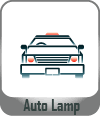
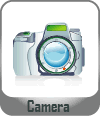
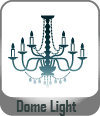
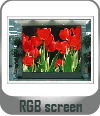
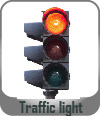
The LEDs described here are intended to be used for ordinary electronic equipment (such as office equipment,
communication equipment and household applications). Consult Betlux’s Sales in advance for information on
applications in which exceptional reliability is required, particularly when the failure or malfunction of the LEDs
may directly jeopardize life or health (such as in aviation, transportation, traffic control equipment, medical
and life support systems and safety devices).
CAUTIONS for Through-Hole LED Lamps
1. Application
The LEDs described here are intended to be used for ordinary electronic equipment (such as office equipment, communication equipment and household applications). Consult Betlux’s Sales in advance for information on applications in which exceptional reliability is required, particularly when the failure or malfunction of the LEDs may directly jeopardize life or health (such as in aviation, transportation, traffic control equipment, medical and life support systems and safety devices).
2. Storage
The storage ambient for the LEDs should not exceed 30℃ temperature or 70% relative humidity. It is
recommended that LEDs out of their original packaging are used within three months
For extended storage out of their original packaging, it is recommended that the LEDs be stored in a sealed
container with appropriate desiccant or in a desiccator with nitrogen ambient.
3. Cleaning
Use alcohol-based cleaning solvents such as isopropyl alcohol to clean the LED if necessary
4. Lead Forming & Assembly
During lead forming, the leads should be bent at a point at least 3mm from the base of LED lens. Do not use
the base of the leadframe as a fulcrum during forming.
Lead forming must be done before soldering, at normal temperature.
During assembly on PCB, use minimum clinch force possible to avoid excessive mechanical stress.
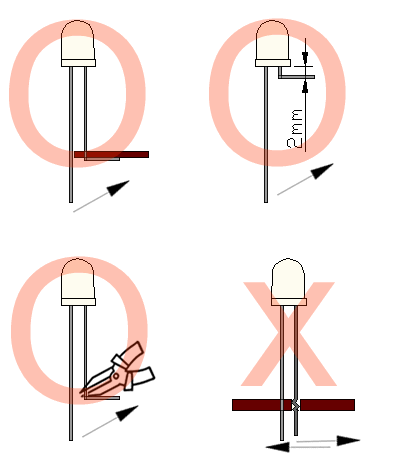
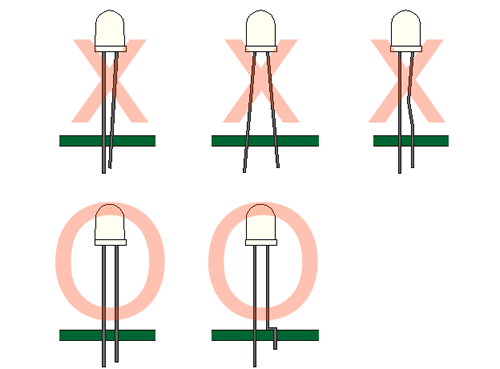
Soldering
When soldering, leave a minimum of 2mm clearance from the base of the base of the lens to the soldering point. Dipping the lens into the solder must be avoided.
Do not apply any external stress to the lead frame during soldering while the LED is at high temperature.
Recommended soldering conditions:
| IR Reflow Soldering (for SMD display) | Wave Soldering | Soldering Iron | |||
| Pre-Heat | 150-180°C | Pre-Heat | 100°C Max. | Temperature | 300°C Max. |
| Pre-Heat Time | 120sec Max. | Pre-Heat Time | 60sec Max. | ||
| Peak Temperature | 260°C Max. | SolderWave | 260°C Max. | Soldering Time | 3sec Max.(one time only) |
| Soldering Time | 10 sec Max. | Soldering Time | 5sec Max. | ||
Note: Excessive soldering temperature and/or time might result in deformation of the LED lens or failure of the LED
ESD(Electrostatic Discharge)
Static Electricity or power surge will damage the LED.
Suggestions to prevent ESD (Electrostatic Discharge):
n Use a conductive wrist band or anti-electrostatic glove when handling these LEDs
n All devices, equipment, and machinery must be properly grounded
n Work tables, storage racks, etc. should be properly grounded
n Use ion blower to neutralize the static charge which might have built up on surface of the LED’s
plastic lens as a result of friction between LEDs during storage and handling
ESD-damaged LEDs will exhibit abnormal characteristics such as high reverse leakage current,
low forward voltage, or “no light on” at low currents. To verify for ESD damage, check for “light on”
and Vf of the suspect LEDs at low currents.
The Vf of “good” LEDs should be>2.0V@0.1mA for InGaN product and >1.4V@0.1mA for AlInGaP
product.

Drive Method
An LED is a current-operated device. In order to ensure intensity uniformity on multiple LEDs connected in
parallel in an application, it is recommended that a current limiting resistor be incorporated in the drive circuit,
in series with each LED as shown in Circuit A below.
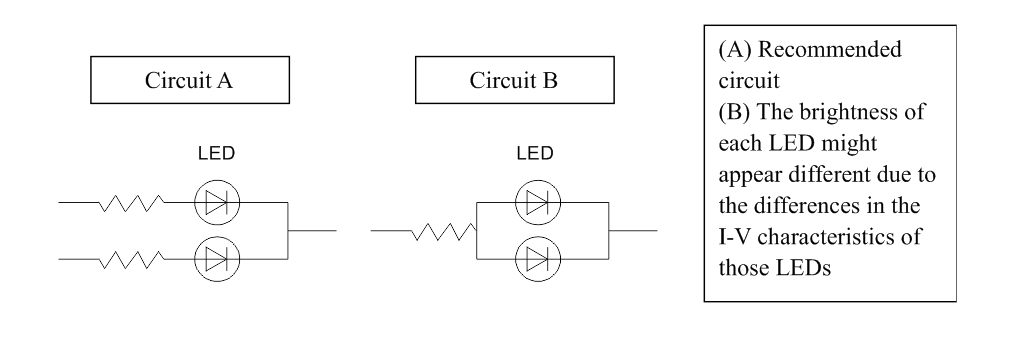
When selecting power for LED systems, it’s essential to understand several key parameters to ensure safe operation, longevity, and optimal performance. Here are some steps and considerations for LED power selection:
- Determine the Forward Voltage (Vf) of the LED(s):
Each LED has a forward voltage, which is the voltage at which the LED operates when the current is flowing through it. This value can typically be found in the LED’s datasheet.
- Determine the Forward Current (If) of the LED(s):
The forward current is the current at which the LED is designed to operate. Running an LED at higher than its rated current can reduce its lifespan and increase the heat it produces.
- Decide on the Configuration:
Series Configuration: When LEDs are connected in series, the forward voltages add up, but the current remains the same.
Parallel Configuration: When LEDs are connected in parallel, the forward voltage remains the same, but the currents add up. This configuration can be risky because if one LED fails or has a slightly lower forward voltage, it can cause the other LEDs to draw more current.
Calculate Total Power Requirements:
Power (W) = Total Forward Voltage (V) x Total Forward Current (A)
For example, if you have three LEDs connected in series, each with a forward voltage of 3V and a forward current of 20mA, the total power requirement would be:
Power = (3V + 3V + 3V) x 20mA = 9V x 0.02A = 0.18W
- Select an Appropriate Power Supply:
- Voltage Rating: The power supply voltage should match or slightly exceed the total forward voltage of your LED configuration.
- Current Rating: The power supply’s current rating should meet or exceed the total forward current of your LED configuration.
- Safety Margin: It’s a good practice to select a power supply that can provide at least 20% more power than your calculated requirement. This ensures the power supply isn’t operating at its maximum capacity, which can extend its life and ensure safer operation.
- Consider Additional Features:
- Dimming Capability: If you want to control the brightness of your LEDs, choose a power supply with dimming capabilities.
- Overcurrent and Overvoltage Protection: To protect your LEDs, select a power supply with built-in protection mechanisms.
- Thermal Management: Ensure that the power supply has adequate cooling, especially if it will be enclosed or in a location with limited airflow.
- Regulation and Efficiency:A power supply with good regulation will maintain a consistent voltage output despite variations in the load. High efficiency ensures minimal power is wasted as heat.
- Physical Size and Form Factor:Depending on where you plan to place the power supply, its size and shape may be critical factors.
In summary, when selecting power for LED systems, understanding your LED’s requirements and the configuration you plan to use is essential. Then, pick a power supply that meets those needs with some added safety margin, keeping in mind any additional features or constraints relevant to your project.
Here are some well-regarded brands in the industry:
- Mean Well: One of the most recognized brands in the LED power supply industry, Mean Well offers a wide range of products suitable for both indoor and outdoor applications. Their units often come with features like overcurrent protection, dimming capabilities, and high efficiency.
- Tridonic: A global leader in lighting technology, Tridonic offers LED drivers and power supplies that cater to various lighting solutions, from simple setups to advanced smart lighting systems.
- Philips Advance Xitanium: Philips is a well-known brand in the lighting industry, and their Xitanium series of LED drivers are known for reliability and performance. They cater to both indoor and outdoor LED applications.
- Osram: Another giant in the lighting industry, Osram offers a range of LED drivers and power supplies suitable for various applications, including architectural and street lighting.
- LIFUD: Specializing in LED drivers, LIFUD is known for its high-quality products that cater to both commercial and residential LED lighting solutions.
- MOSO: This brand offers a variety of LED drivers, especially for outdoor and industrial applications. Their products are known for durability and performance.
- TDK-Lambda: With a history in power electronics, TDK-Lambda offers a range of power supplies and LED drivers suitable for various applications, emphasizing reliability and advanced features.



